I finally got to go to Toledo, my grandparents went there in the 80’s and they bought back a knife for all their grand-kids, I must have been around 10 (the boys, don’t know what the girls got). The knife had my name carved into the blade on one side and on the other it said Toledo, I still have it. So, the curiosity seed of Toledo was planted in my mind as a child and I couldn’t miss the opportunity to go.
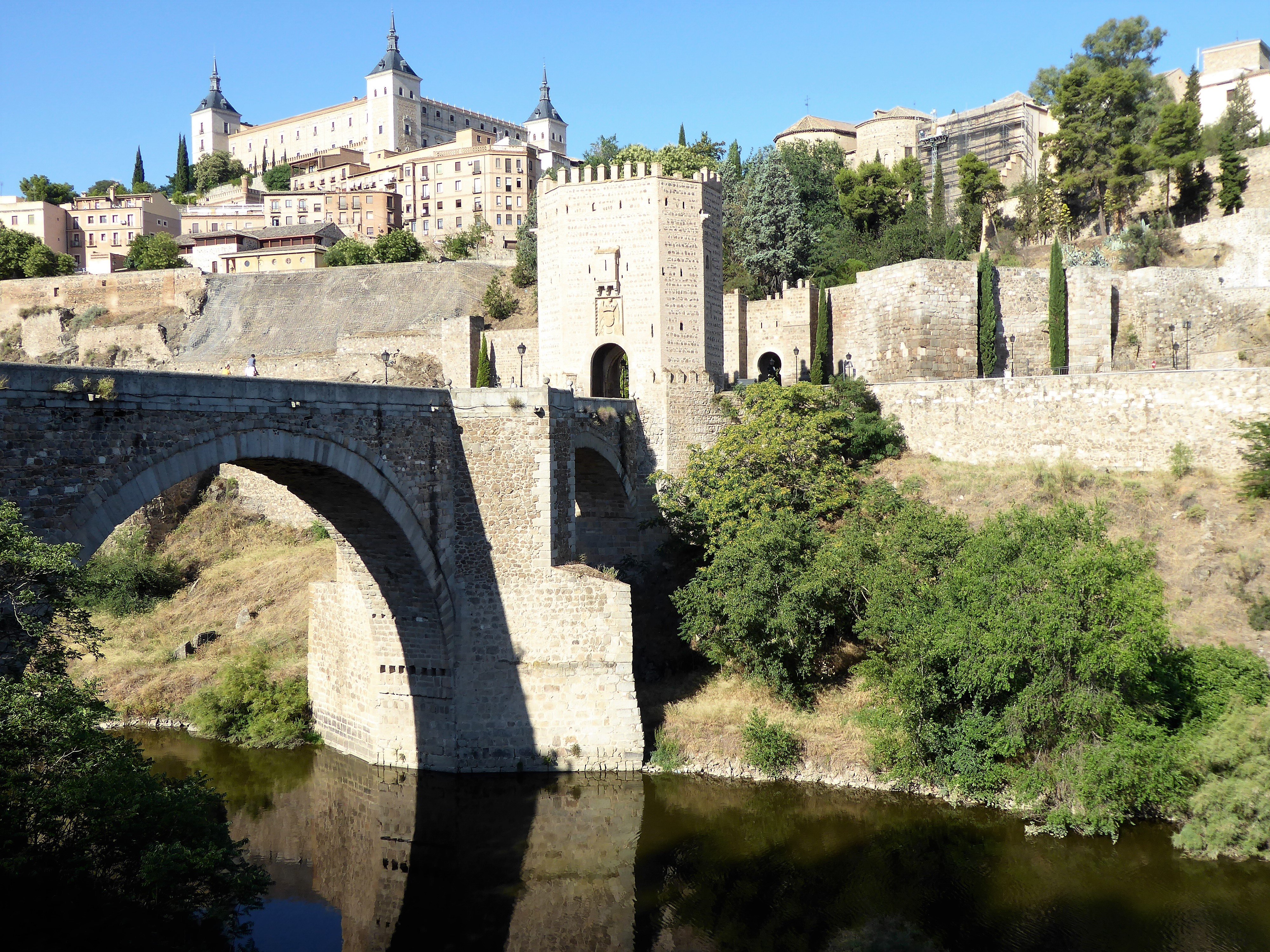
Puente de Alcantara / Alcantara Bridge
The train from Madrid to Toledo is just over 30 minutes, with the train station less than 10 minutes’ walk to the start of the historical centre where you are greeted into the Toledo by Puente de Alcantara (not to be confused with the Alcantara Bridge). A Roman built bridge with two fortified towers and doors on either end that were constantly attacked during the Reconquest and as a result had to be rebuilt afterwards (dates of construction are a bit sketchy but seems is could be around 65-96BC I wouldn’t want to be quoted on that). Facing the bridge to the left you have Castillo de San Servando / Castel of San Servando; I won’t go off on too much of a tangent here because unfortunately the castle is closed to the public…..I found this out the hard way by walking there on the hottest day only to be disappointed. Only consolation was that I prevented a German couple making the same mistake, my good deed for the day. That’s my detour tangent over, looking to the right of the bridge you get a miniscule glimpse of what the town has on display to see, and there is lots to see!
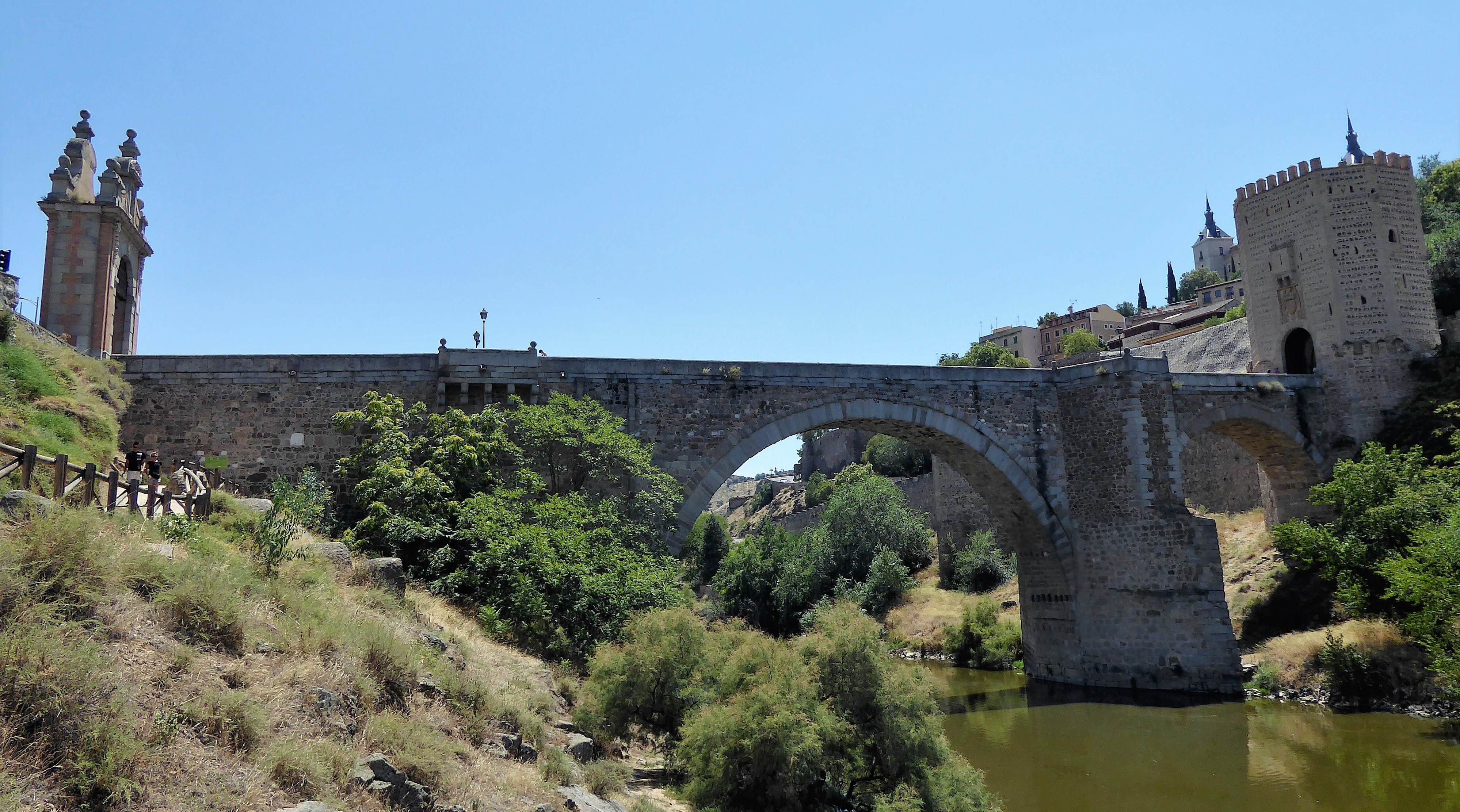

I reached my hostel and was almost dripping with sweet, only 2.5km from the station however in high 30’s degrees Celsius. Hostel La Campana is right on the edge of the old Jewish Quarter, just off centre of the very heart of Toledo; the town is not big at all North to South is 1.1km and East to West is 1.3km (historical town), the Hospital Tavera in about 150m North of the old city wall by Puerta de Bisagra. It isn’t really what I would call a hostel, a lot more like a very small hotel with a restaurant attached which closes at 16:00, odd times, but the place is clean, has everything you could want including being cheap (for three nights I paid €114), friendly helpful service and perfect location.
Primate Cathedral of Saint Mary of Toledo / Catedral Primada Santa María de Toledo / Cathedral Primada / Toledo Cathedral
This is a Gothic masterpiece! Construction began early in the 13th century and completed in 1493 with the completion of the vaults of the central nave and located on top of a what used to be a mosque. There is an entrance fee it includes an audio guide; because of its size, history, copious stories and anecdotes about the cathedral I don’t think it would be worth visiting it without a guide – I can’t remember the price of entrance but is was under €10 if my recollection serves me right. The exterior of light stone greyed with age especially the bell tower as it looks to be made of a grey stone. The bell tower is a true Gothic architectural showpiece and because of the different stone used it gives the impression they design the towers to intentionally stand out. The result makes the towers look like oversized ornate guard towers with the main entrance to the cathedral in the middle, the main bell tower towering into the sky like a beacon overlooking the town and can be seen from almost every part of the town too.
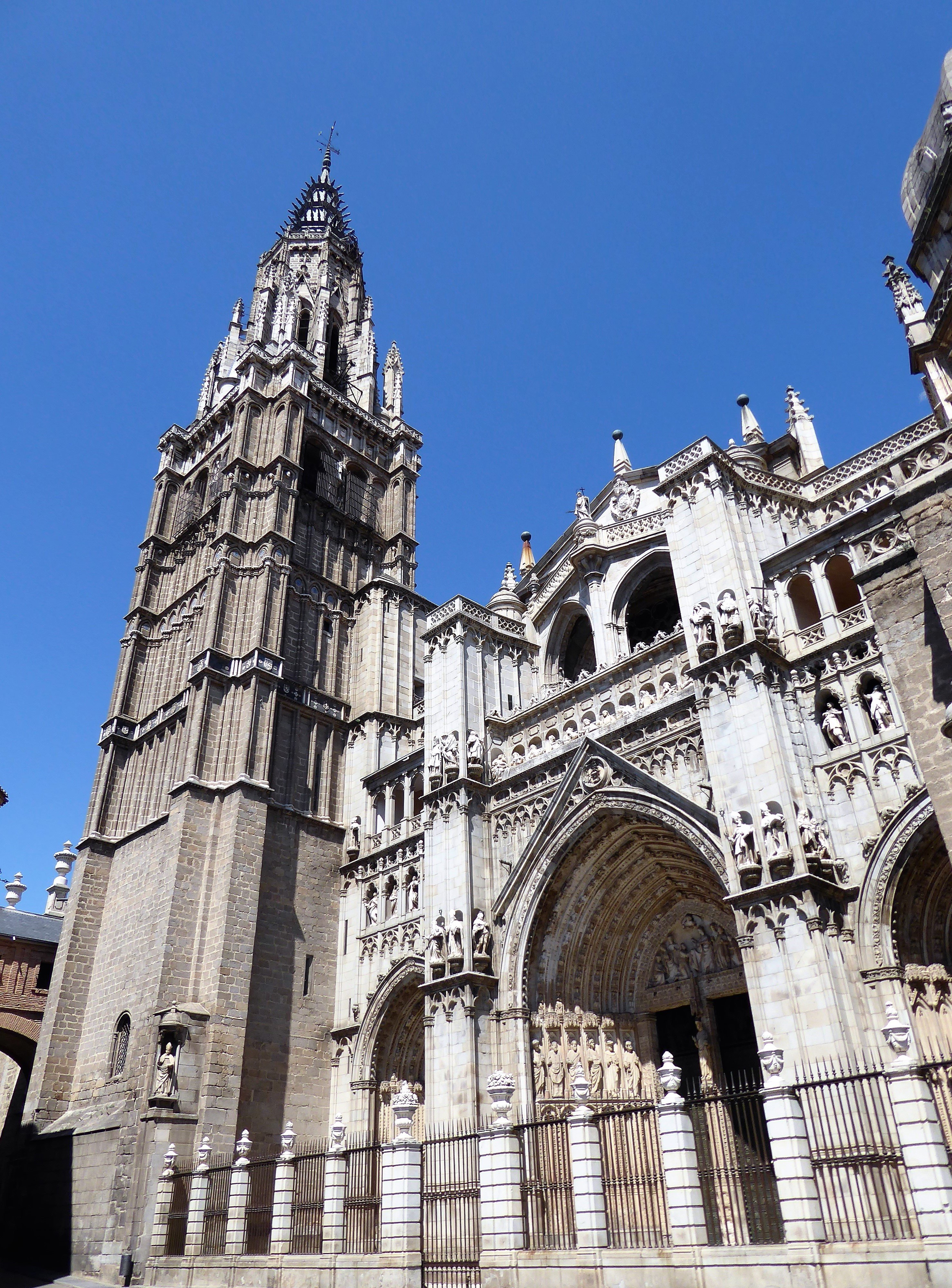
To be frank, you could go to the cathedral every day for over a month and still not see or know everything about it, it is a magnificent cathedral. I found it a challenge to limit what to say about it and even what to say let alone limit the number of pictures! Everything is on a grand scale, intricate detail whether woodwork or stone although the majority of the detail and carving is in stone. I’ll try cover what I felt were my highlights though the whole cathedral is a “highlight”. The Retable is a five-storey high sensory overload Gothic altar piece of wood carving with gold gilding, flanked on both sides by misty light crème stone, my guess alabaster and marble sculpted walls. Both sides used to be almost the same but the left side was altered to incorporate the sepulchre of Cardinal Mendoza, the other side original ornate stone wall with windows cut out giving you a different perspective looking into the main chapel.
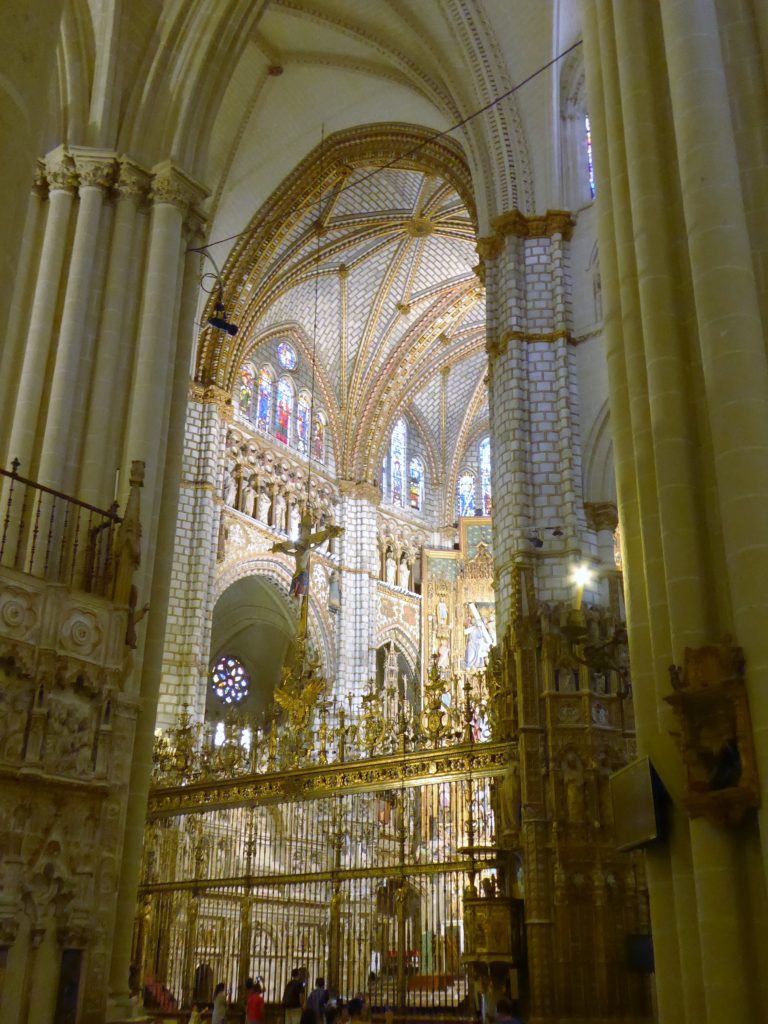
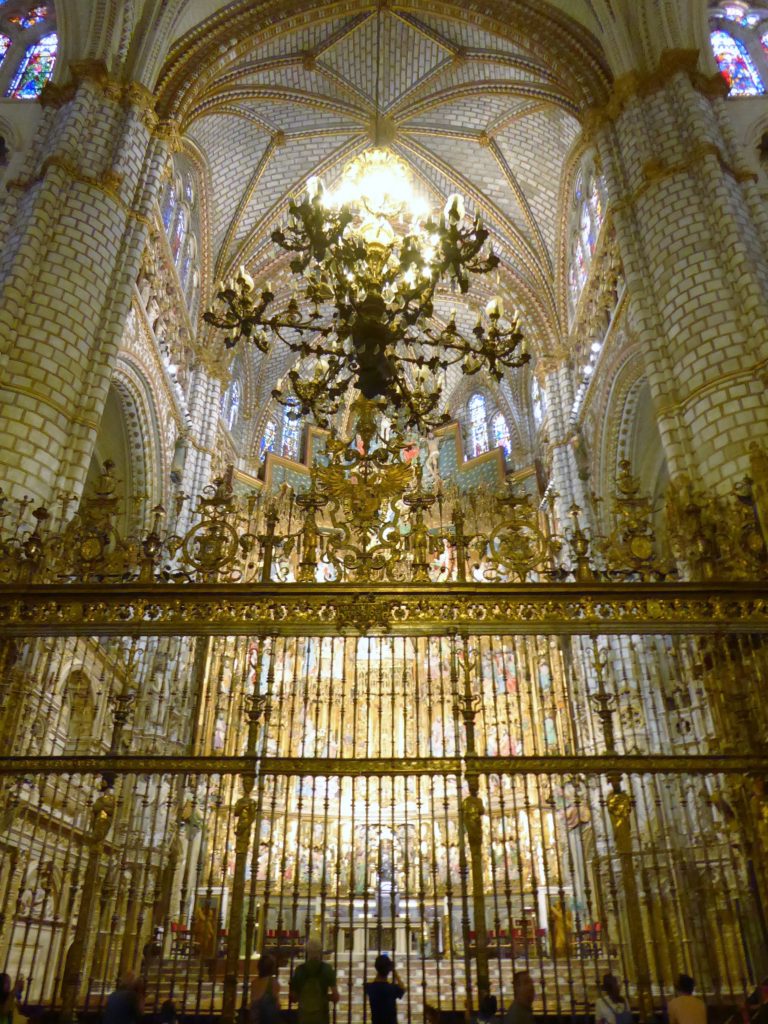
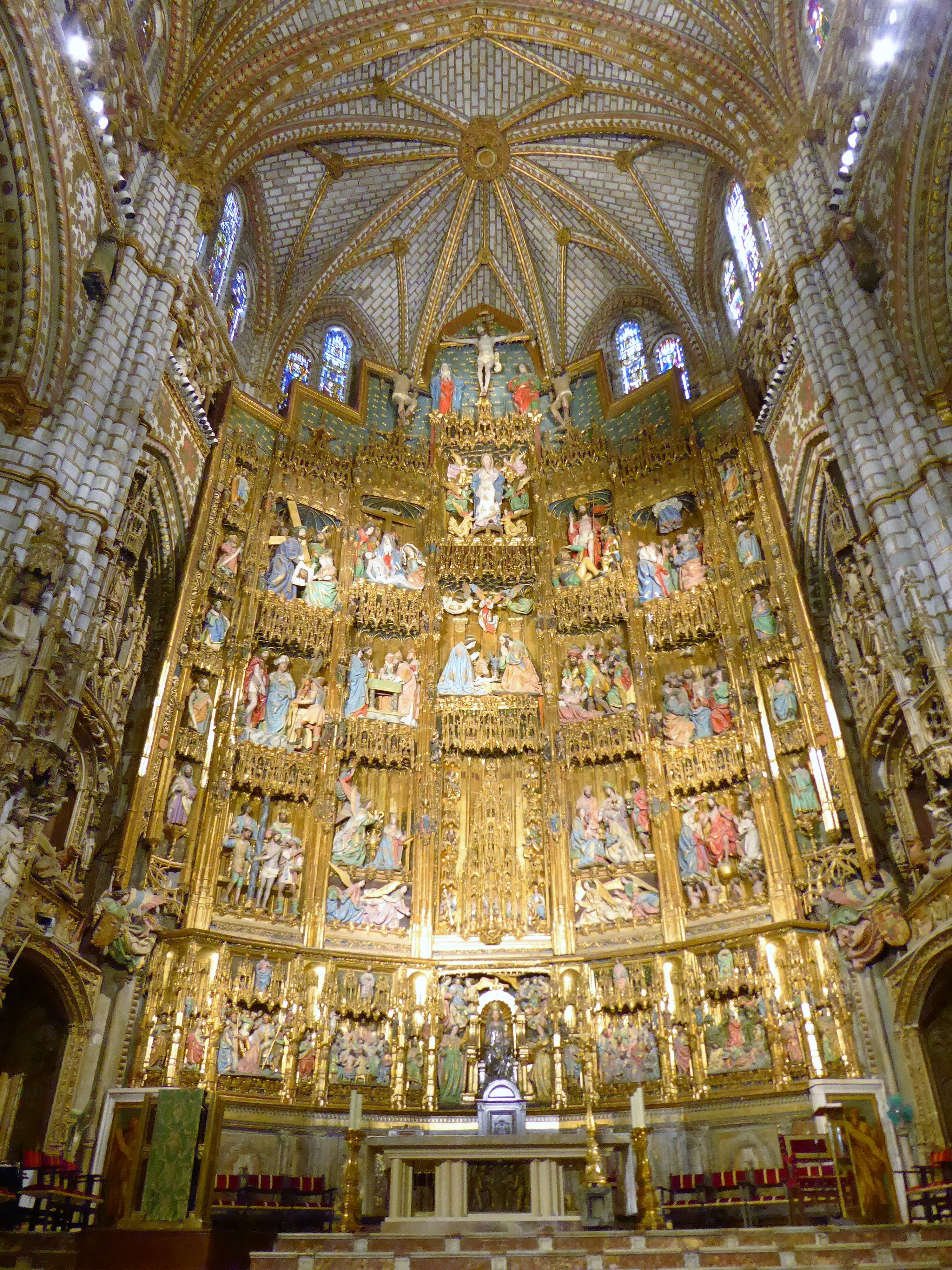
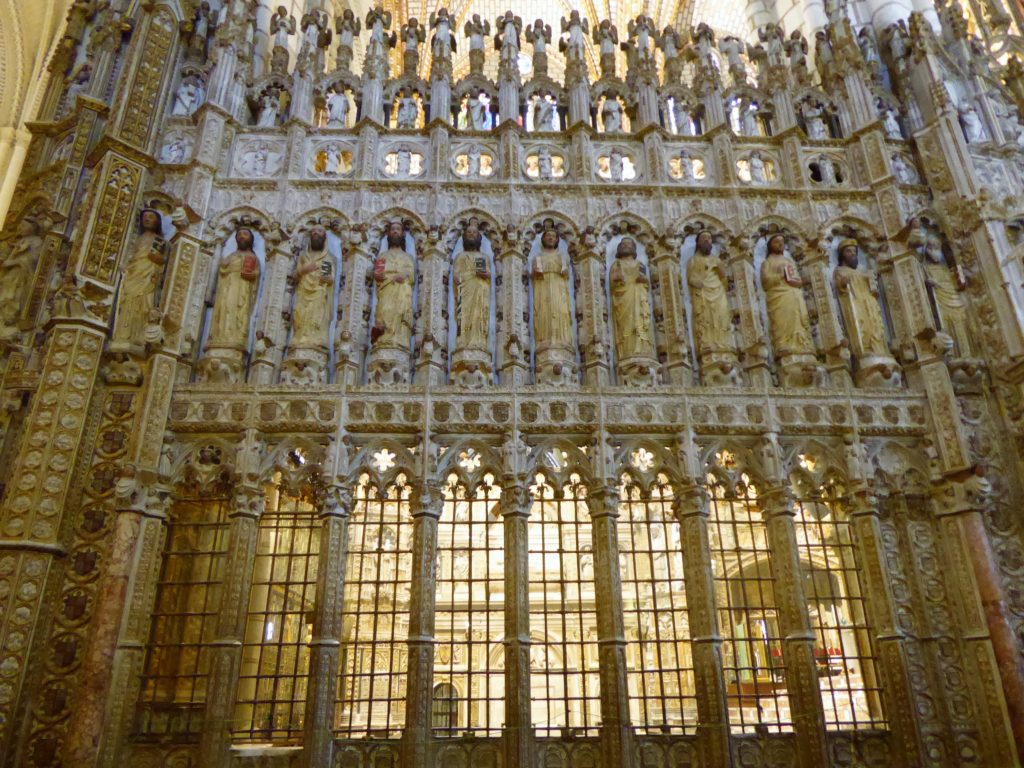
The choir
Opposite the main altar facing each other is the area for the choir. I’ve seen stately homes, palaces etc. and they don’t even compare to where the choir sits. Two tiers in a square u-shape carved in dark wood, could be mahogany or dark-oak. Although the seating seems identical the work was done by two artists and divided in half, the one artist had the left side the other the right. Even though two people did the work there is a uniformity to it, above the second tier white stone stucco (maybe marble) statuettes around the circumference makes the backrest of the seating look three times higher – I can only imagine this amplifies the acoustics into the vaulted ceiling which channels it through the cathedral. The choir enclosure is a work of art in itself and an exquisite park of the cathedral

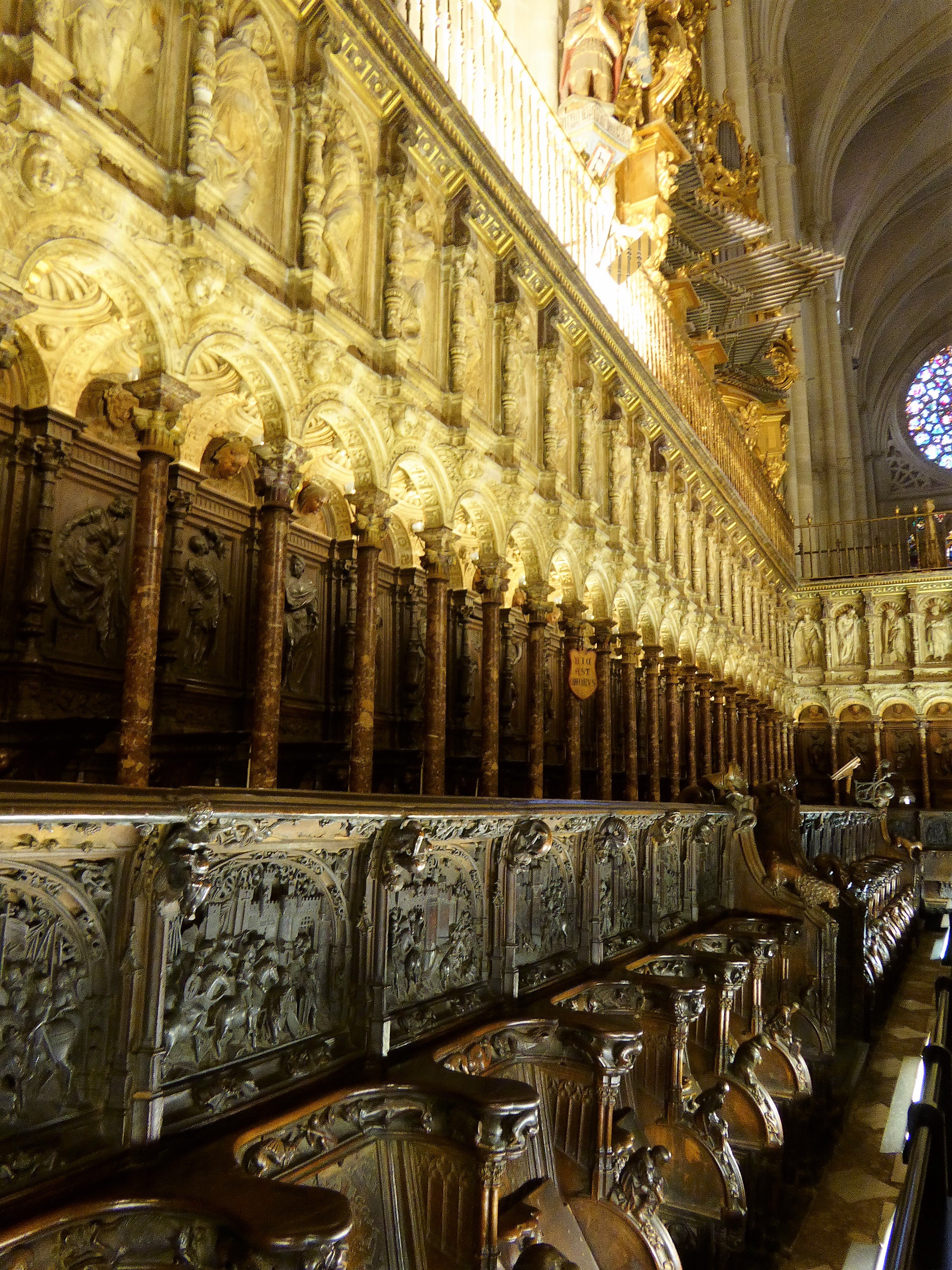
El Transparente
A baroque altarpiece on the other side of the cathedrals main altar. Called El Transparente because of the way the altar is lit-up from above by a large skylight. The skylight looks like it is at the one end of a round hole cut through the thick wall creating a tube of light baring down into the cathedral like a spotlight gazing directly at the El Transparente. The design a mixed medium of stucco, painting, bronze castings, and multiple colours of marble all a baroque style making the altar stand out in the cathedral even more so due to the cathedral being so Gothic, with a few Moorish twists thrown in here and there.
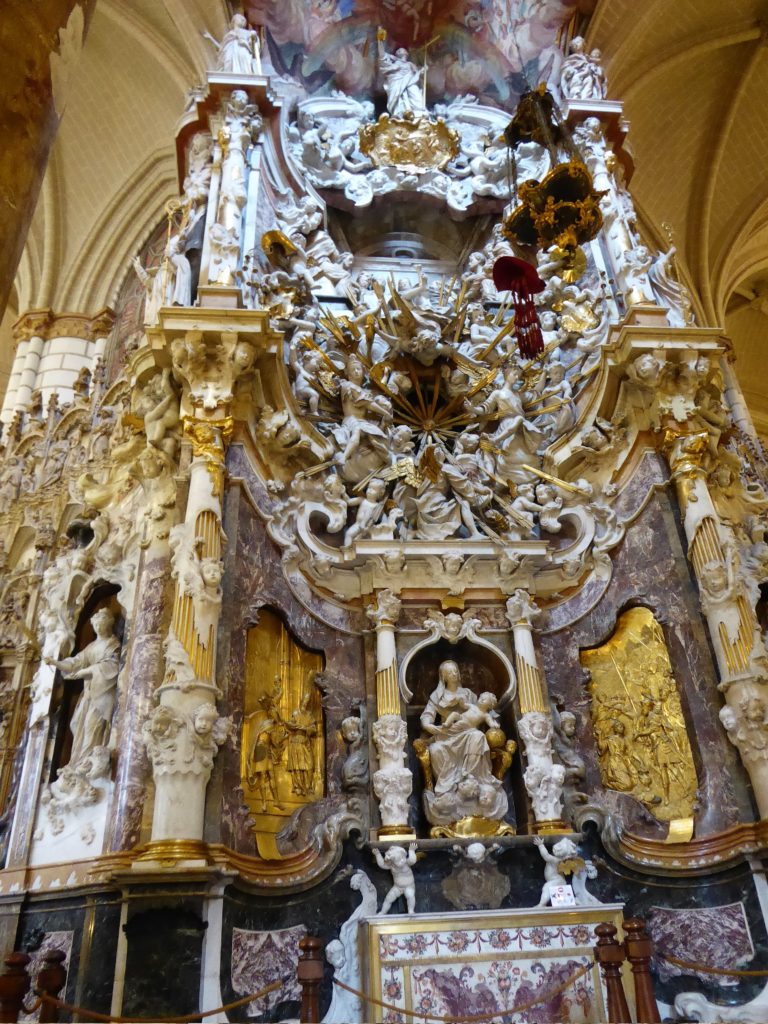
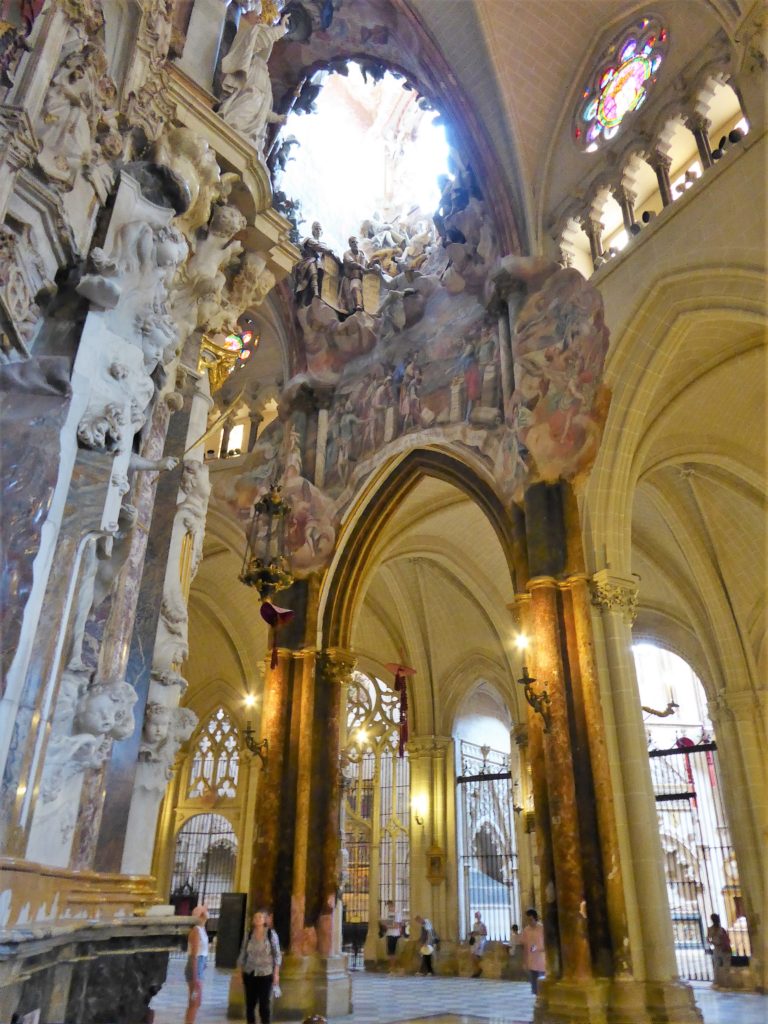
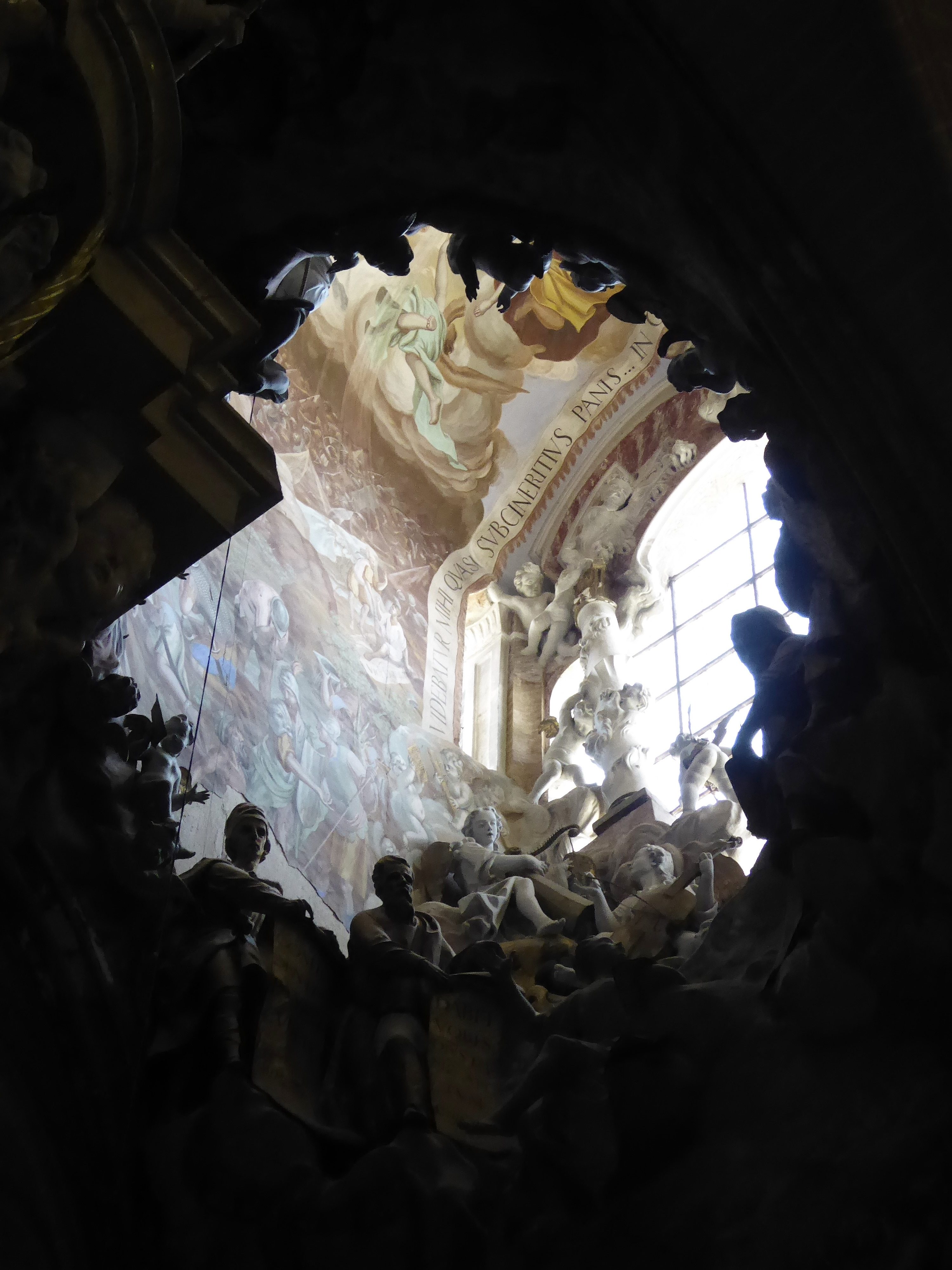
The Great Monstrance of Arfe / La Gran Ostensoria de Toledo
Over 10 foot high and famous for being used in the annual feast of Corpus Christi of Toledo. Glistening from every angle and surface of shining gold, silver and gems I’ve never seen a monstrance with such a combination in size, exquisite detail down to the millimeter and extreme luxury. I would take a few pages if I tried to describe it fully so I’ll take the easy route and let the pictures do the work! Eighteen kilograms of 18 karat gold and 183 kilograms of pure silver and who knows how many gems.
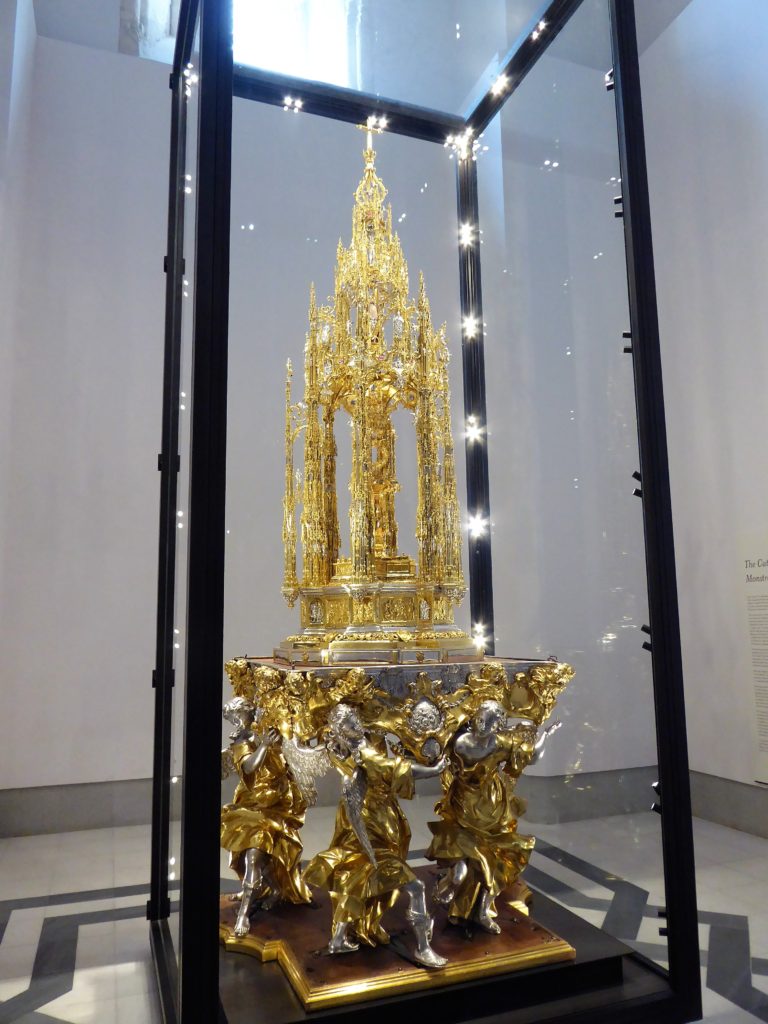
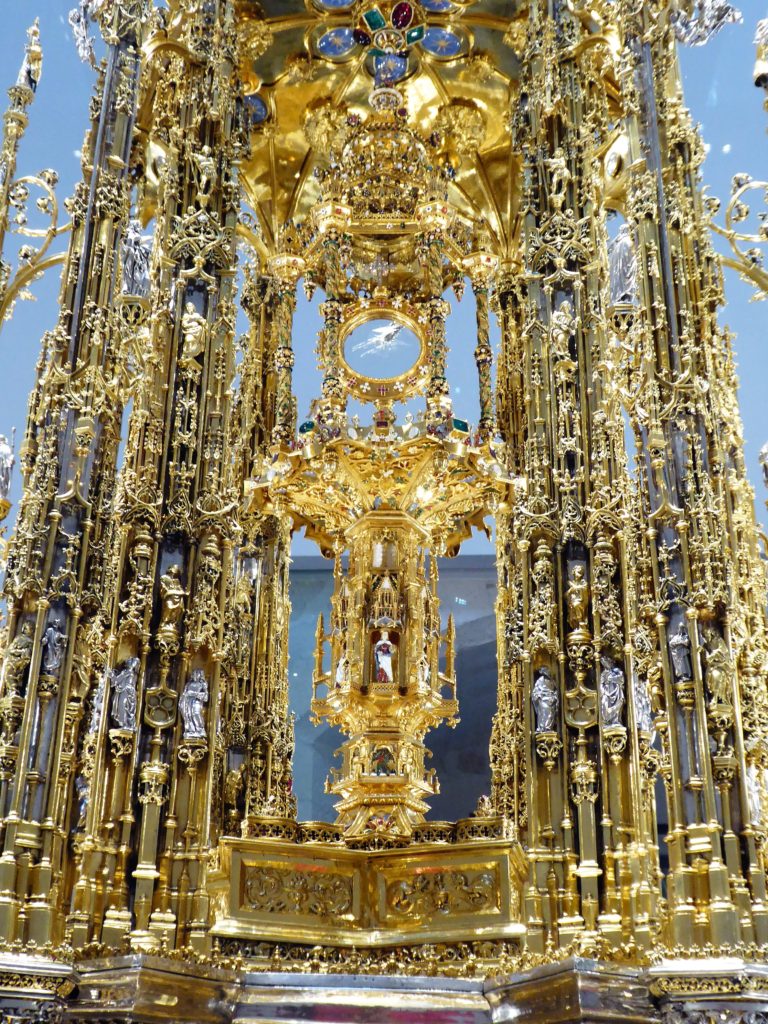
The Chapel of Saint Blaise
Completed near the end of the 14th century it was commissioned by Archbishop Tenorio with an octopartite vault roof. A lot of the chapel particularly the walls have deteriorated badly but the roof, wow the roof!; the rich vivid valet blue ceiling divided by golden ridges of the vault reminds me of the early morning night sky, the stars still bright against a backdrop of clear deep blue. A burial chamber and chapel built for what must have served the Archbishops ego, status and religious belief. Very different from the rest of the cathedral but I just loved the richness of the colours.
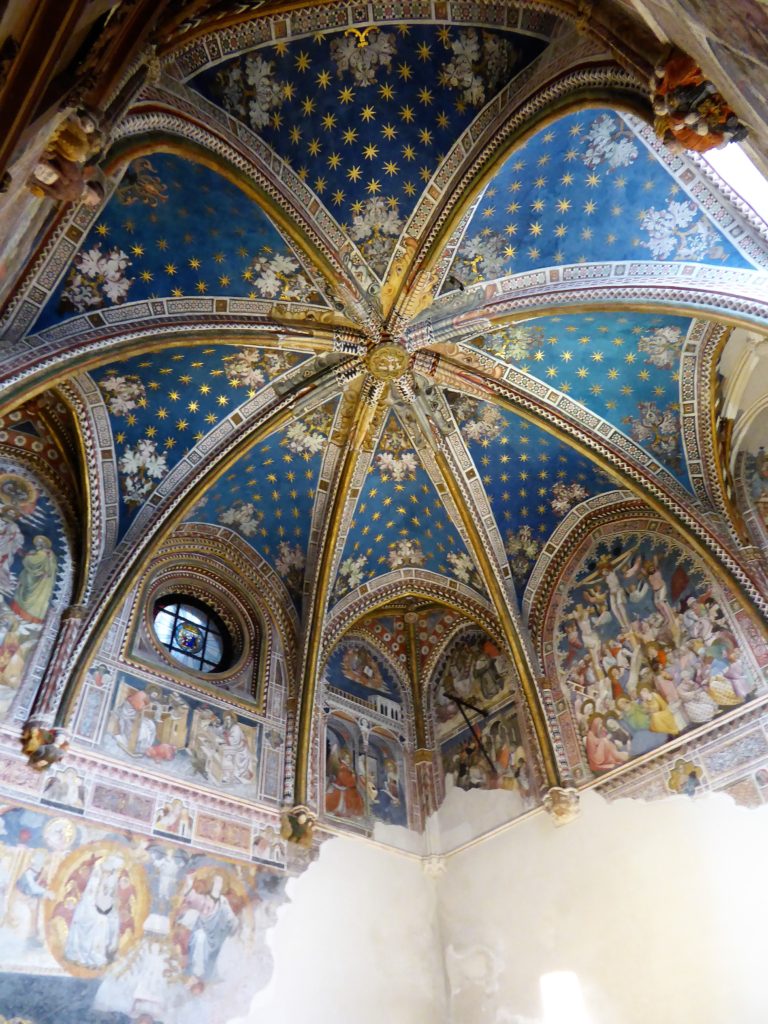
The cathedral is deserving of a lot more that what I have said, I’ll add some additional pictures at the end of the post. Toledo cathedral is very well worth the visit, I’d go so far as to say a must visit even a major detour in a journey just to see it…..problem is when you get to Toledo you will want to see more….not such a bad problem to have. ?
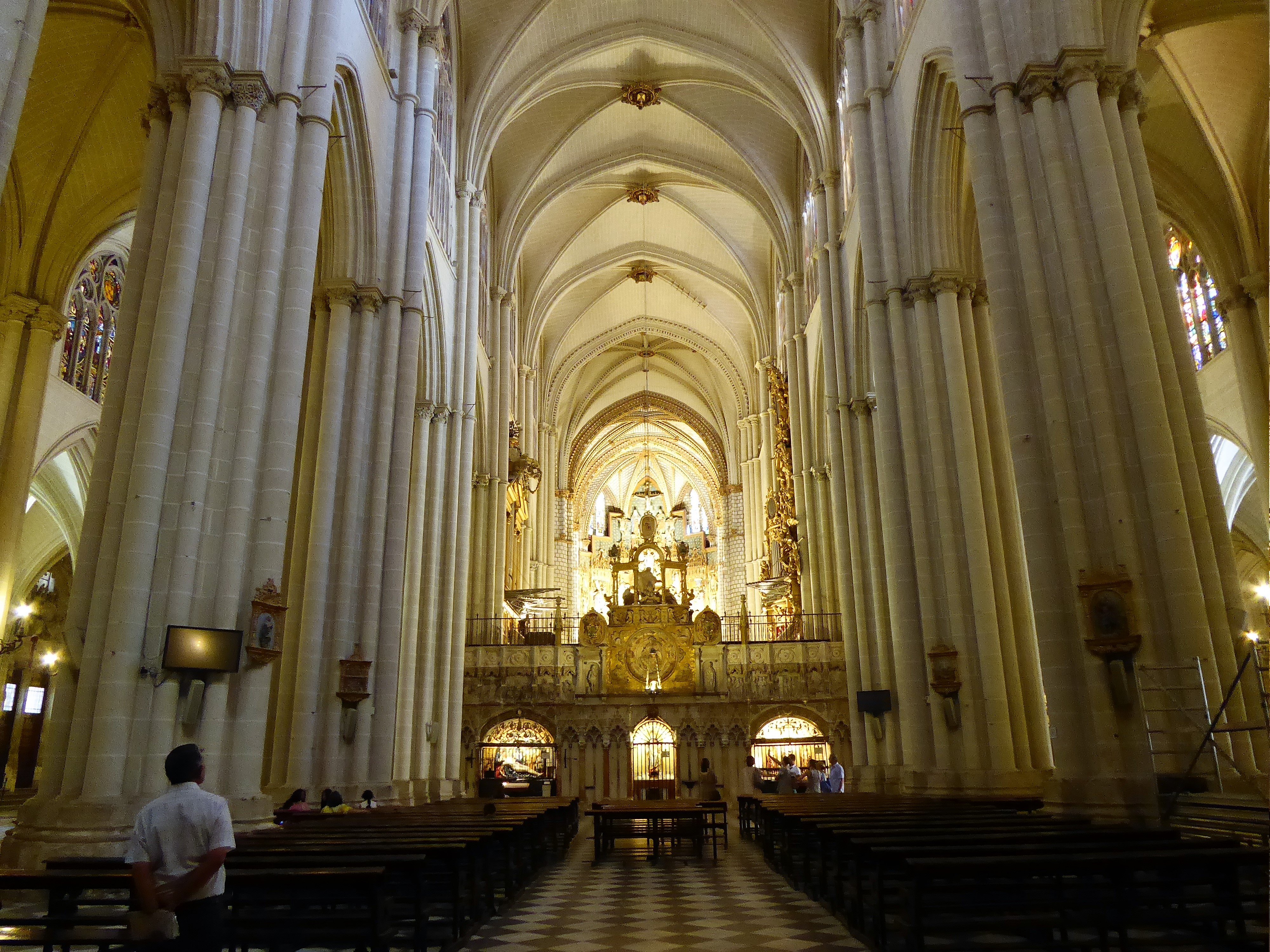
I only got to Toledo in the afternoon so other than walking around the cathedral was really my only attraction I had time to see, no complaints about that from me! Toledo has a totally different atmosphere in the evening giving you the opportunity to imagine, at least to some degree, what the place must have been like hundreds of years ago, well, at least without the spotlights. The lights earmarking some of the buildings like beacons lit from below as if inviting you to go from one beacon to the next through the narrow dimly lit alleyways.

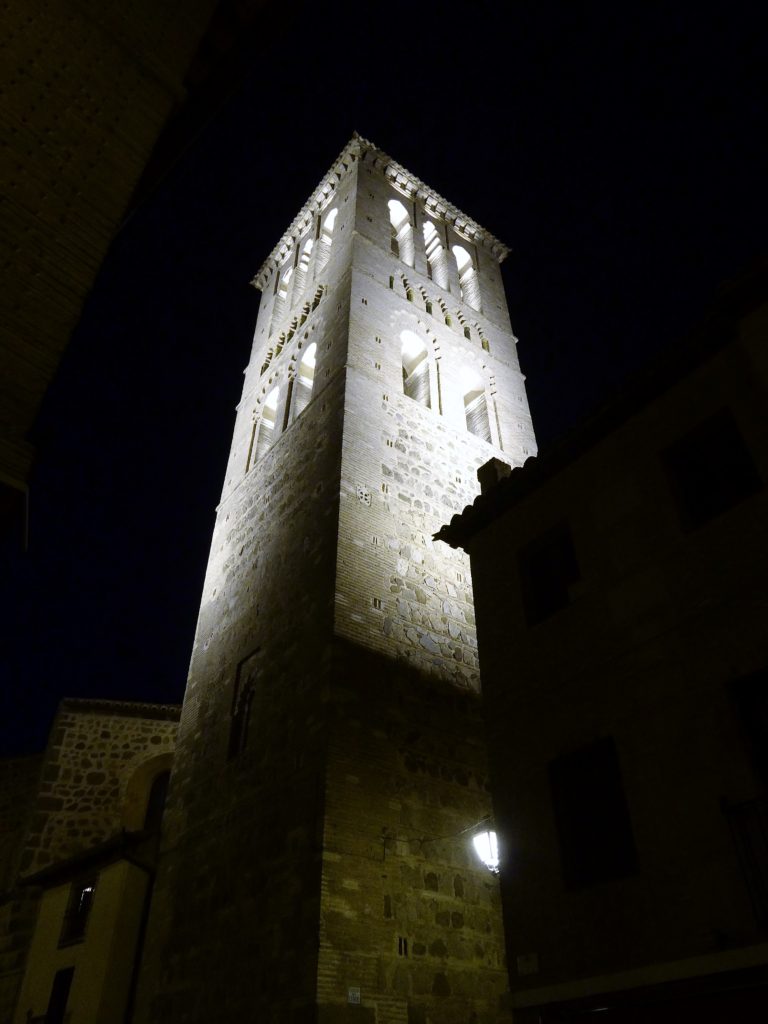


Iglesia de San Roman / Church of San Roman
The next morning I started off with visiting the Church of San Roman a Mudejar architectural church built in the 13th century on top of what used to be a Visigothic structure prior to that a Roman structure. The church is the now also the headquarters of the Museum of the Councils and Visigothic Culture. A small footprint of a church with a unique and eclectic interior design that also houses a great little archaeological collection from the 6th-8th century. It’s not a very big display however that doesn’t diminish the importance of the collection, if you consider that Toledo was also the capital of the Visigothic kingdom the collection has amazing prominence and importance in the history not only of Toledo but the region as a whole. You can climb to the top of the tower too enabling you to see the innerworkings of the design of the church as well as the engineering of the tower.

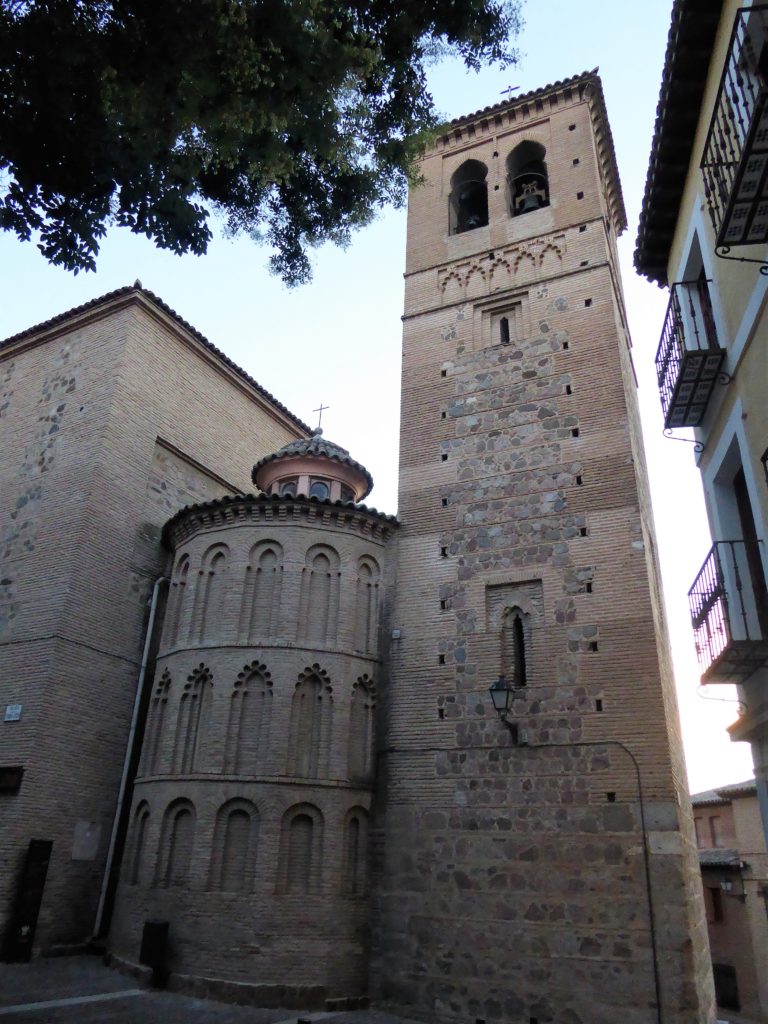
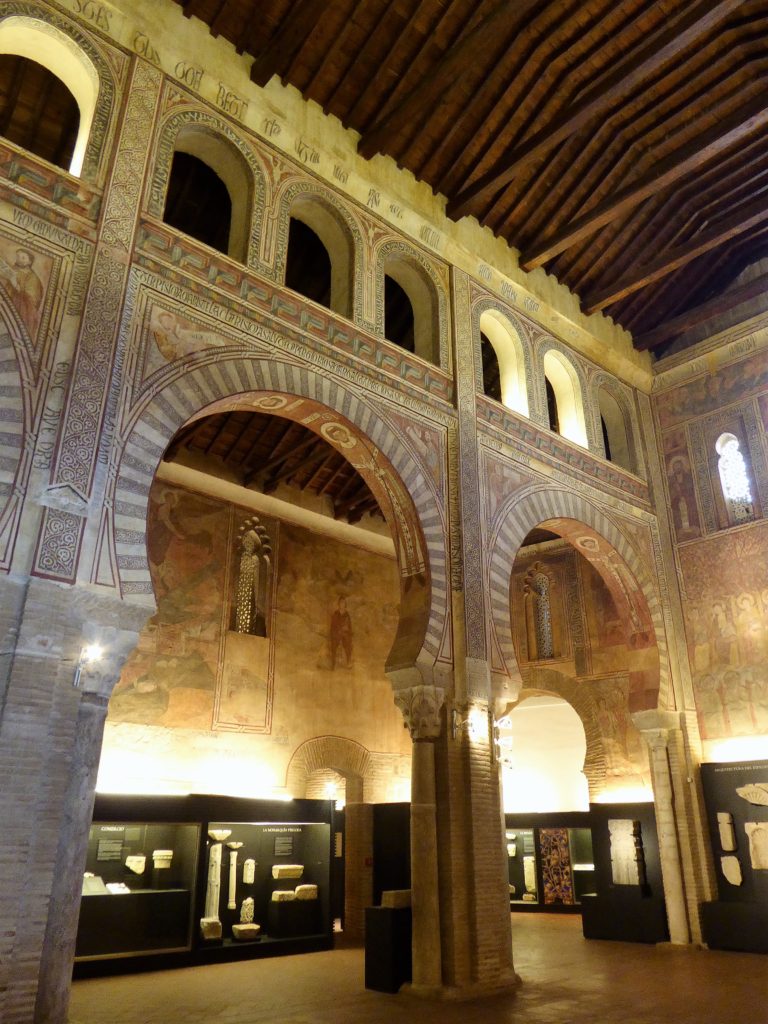
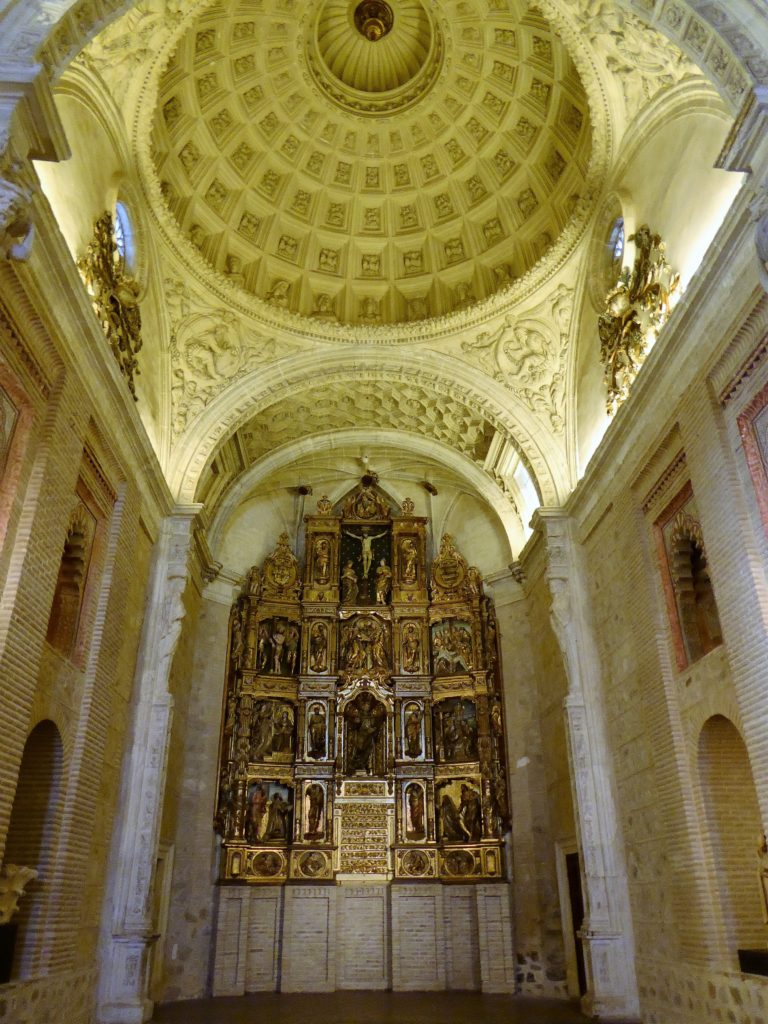
The main chapel of the church could easily be mistaken as a mosque if you removed the main altarpiece and the painting on the walls, now barely visibly being faded over hundreds of years. The horseshoe repeating arches in cream and reddish-pink decorated in reoccurring patterns, above each arch three interior balcony windows framed in Arabic script.
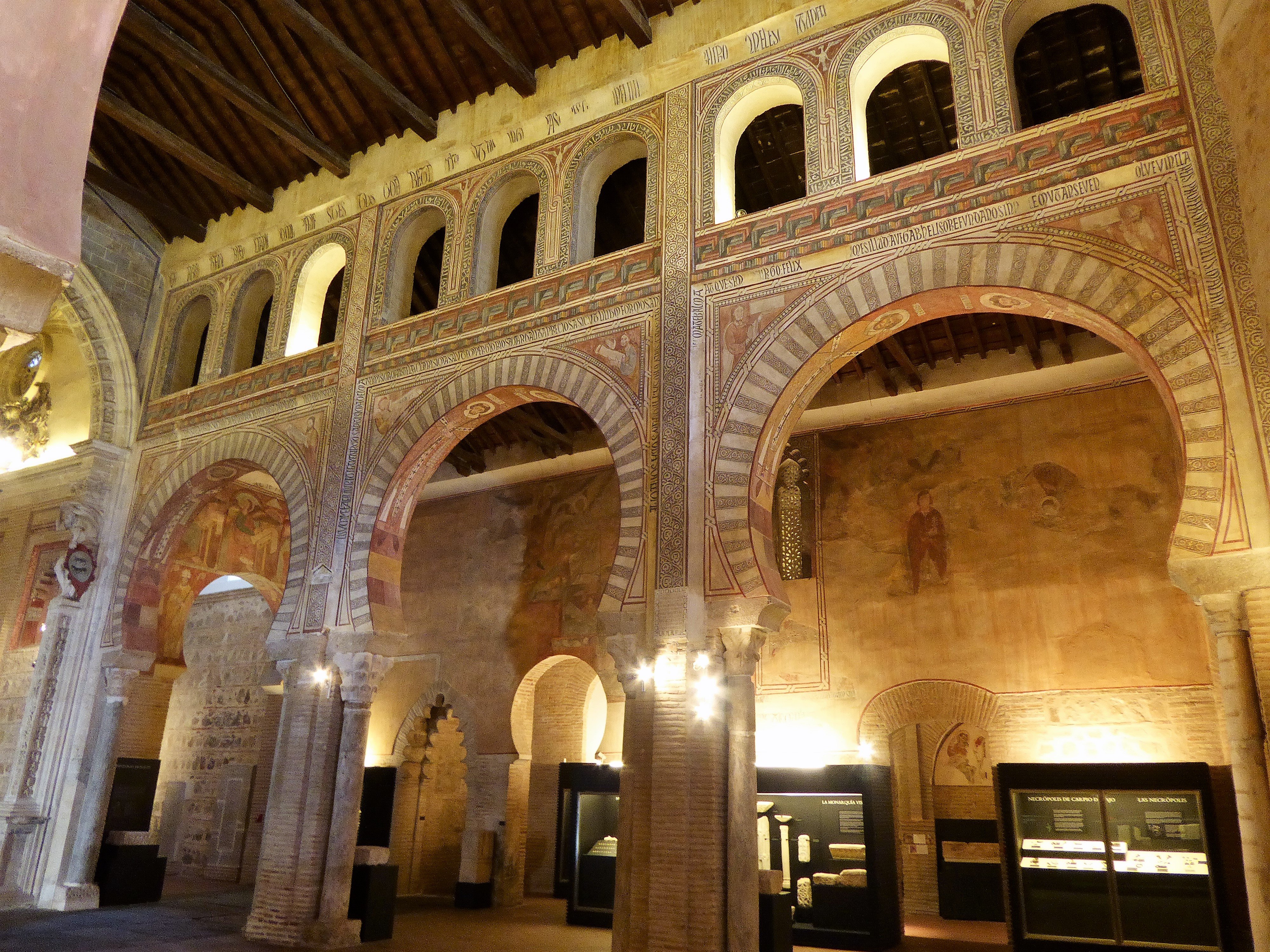

Museo de Santa Cruz / Museum of Santa Cruz
It used to be an important hospital that was built in the 16th century and converted into a museum since the 19th century. If you don’t have time to see the Alcazar this museum covers archaeology of Roman, Visigothic and Arabic/Mudejar and paintings from the 16th-17th century. The whole display isn’t as extensive as the Alcazar obviously and still manages to give you a great insight into Toledo spanning almost 2000 years. Not all the displays were open unfortunately, that which was on display was worth seeing – the written descriptions giving a detailed commentary with focus on the Habsburg Spain coinciding with the paintings.
During this time Spain was in most opinions the most powerful country in the world, controlling territory in the Americas, East Indies, Lower Countries and territories in France and Germany, Portuguese Empire and others in North Africa. The museum follows the chronological story of Habsburg Spain’s rise (Age of Expansion) and gradual decline with artefacts, paintings and stories in a succinct manner.
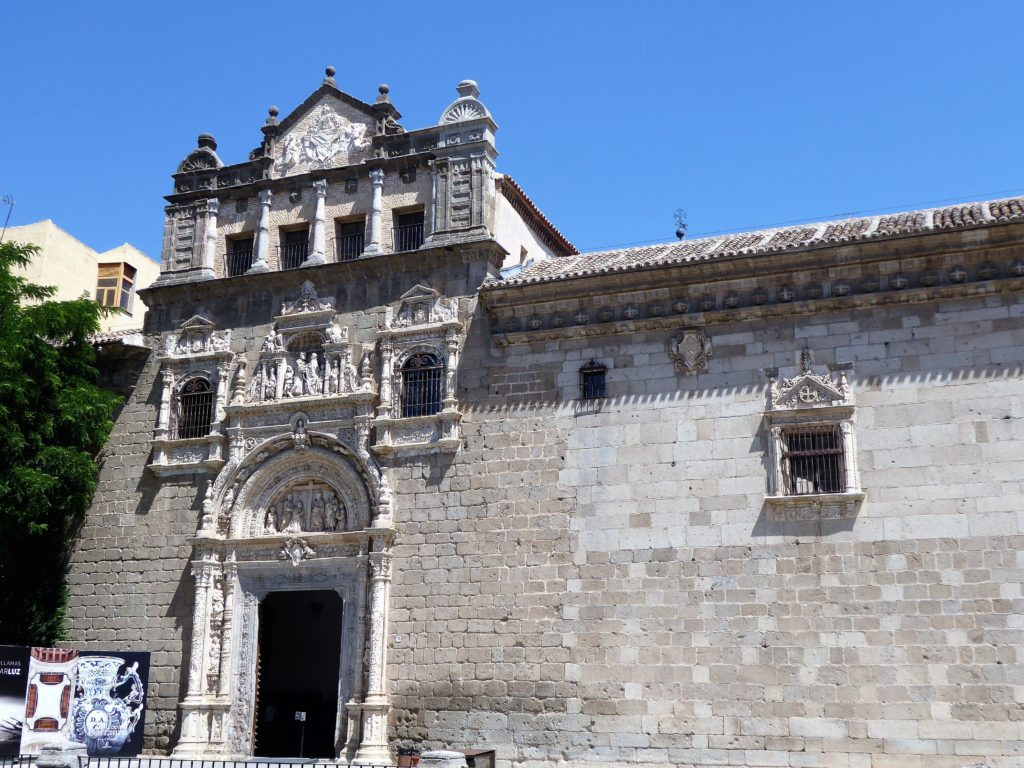

I found the staircase in the courtyard leading to the second floor quite special; white stone carved to look like individual bricks. The balustrade and handrail in the same stone stretched between beautifully engraved posts against the light grey marble stairs.

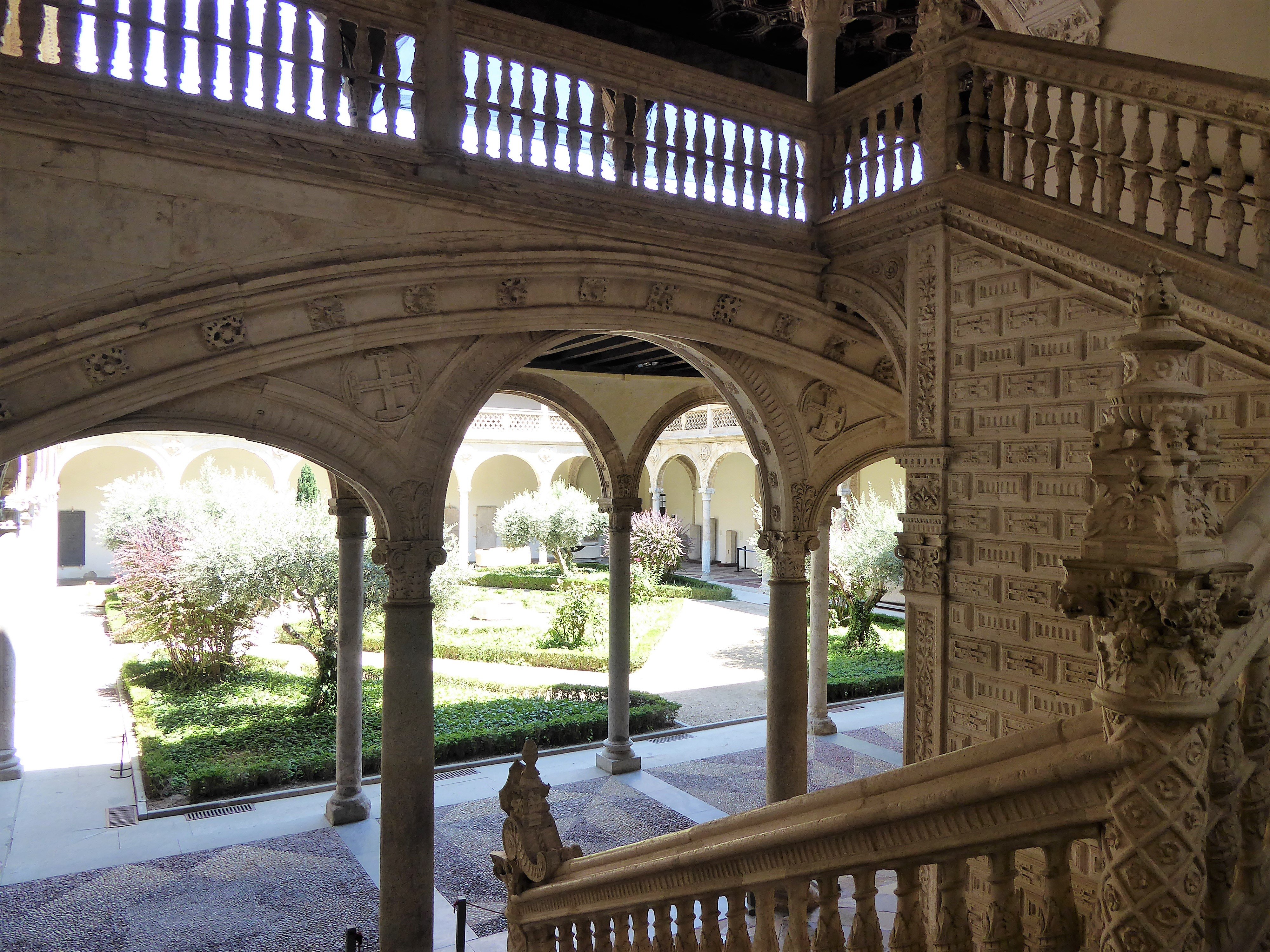
Headed to see the Castillo de San Servando / Castle of San Servando as mentioned earlier arriving to find out it is closed to the public I decided to do a short walk along the Tagus river as it wraps around Toledo.
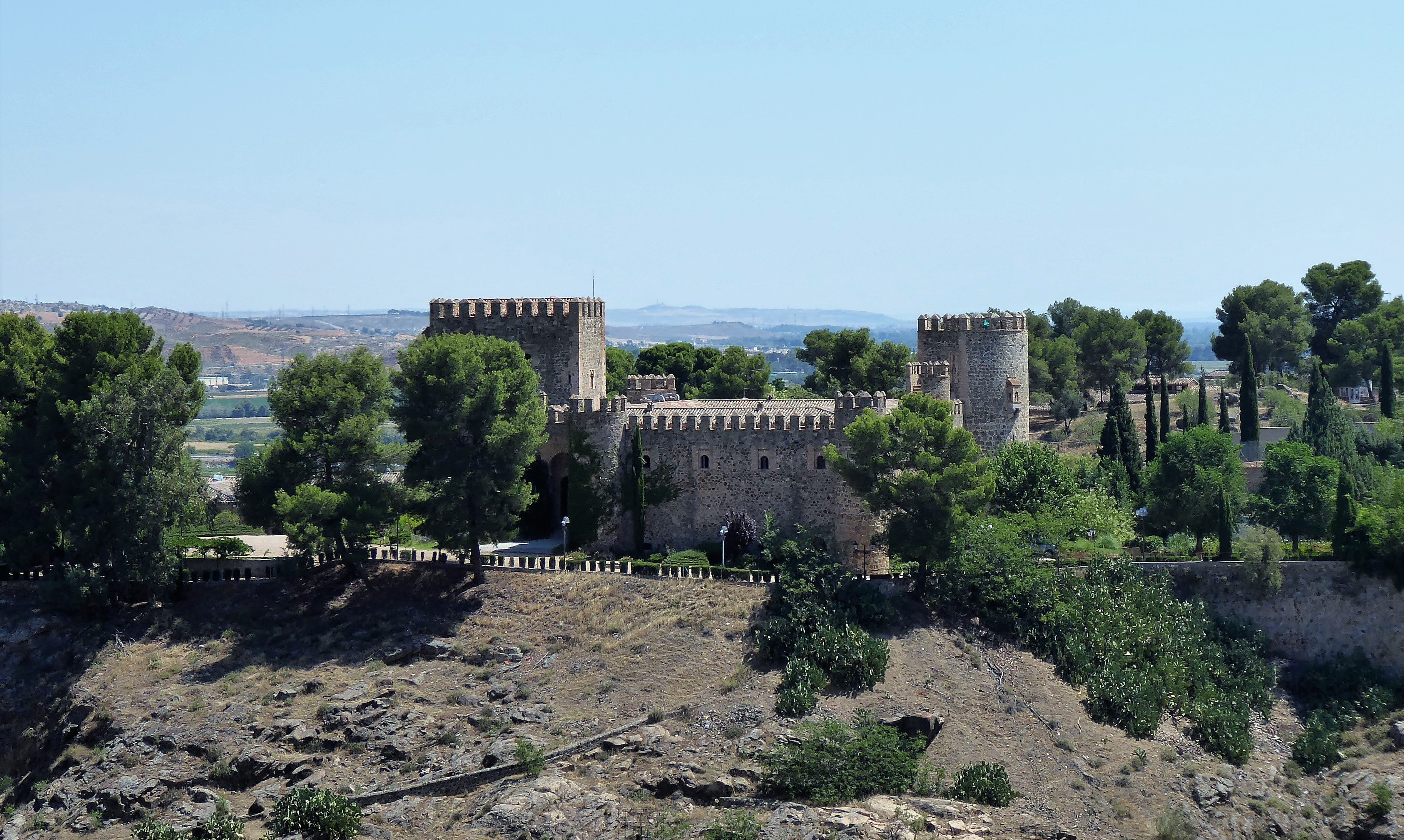
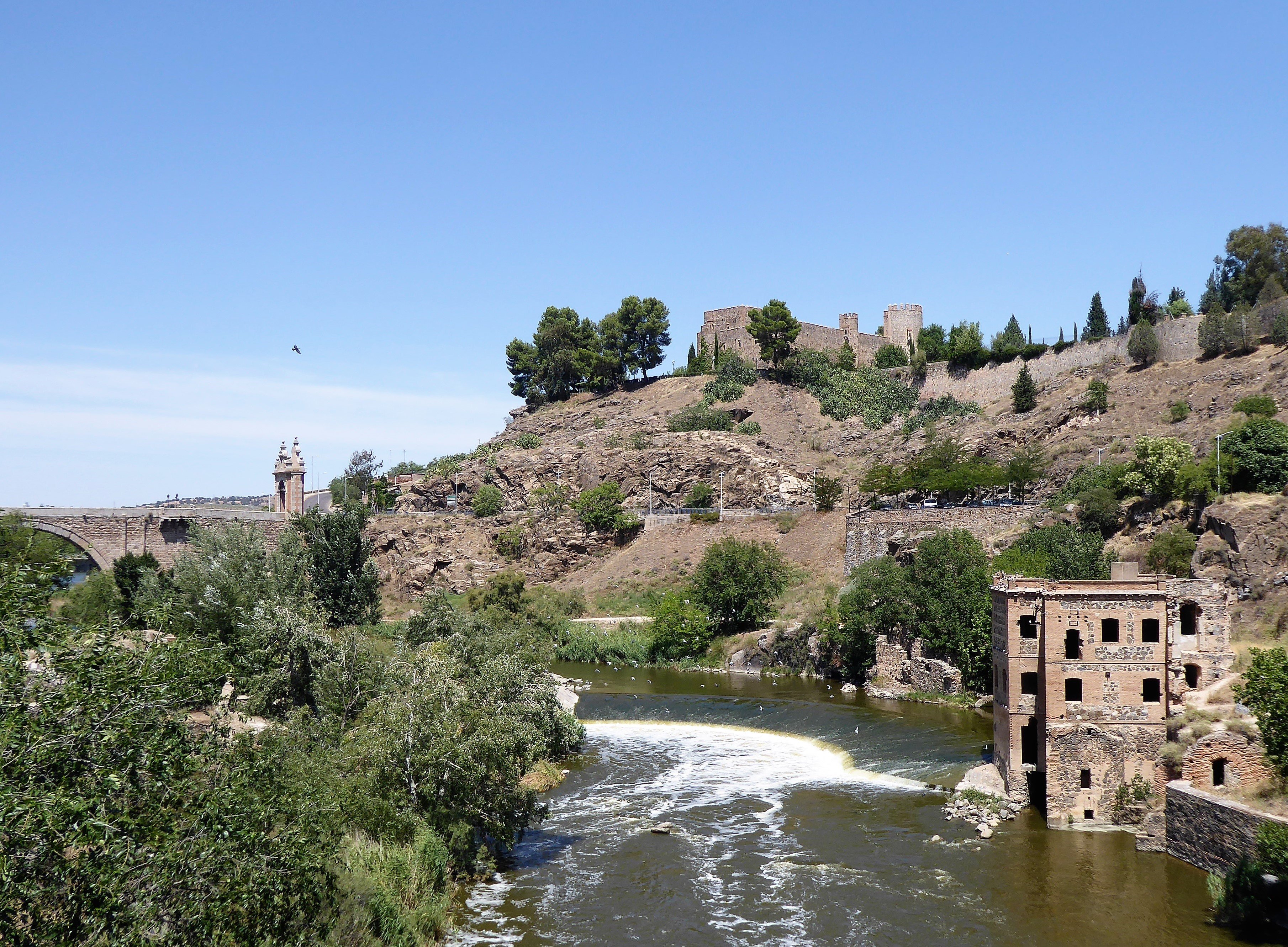
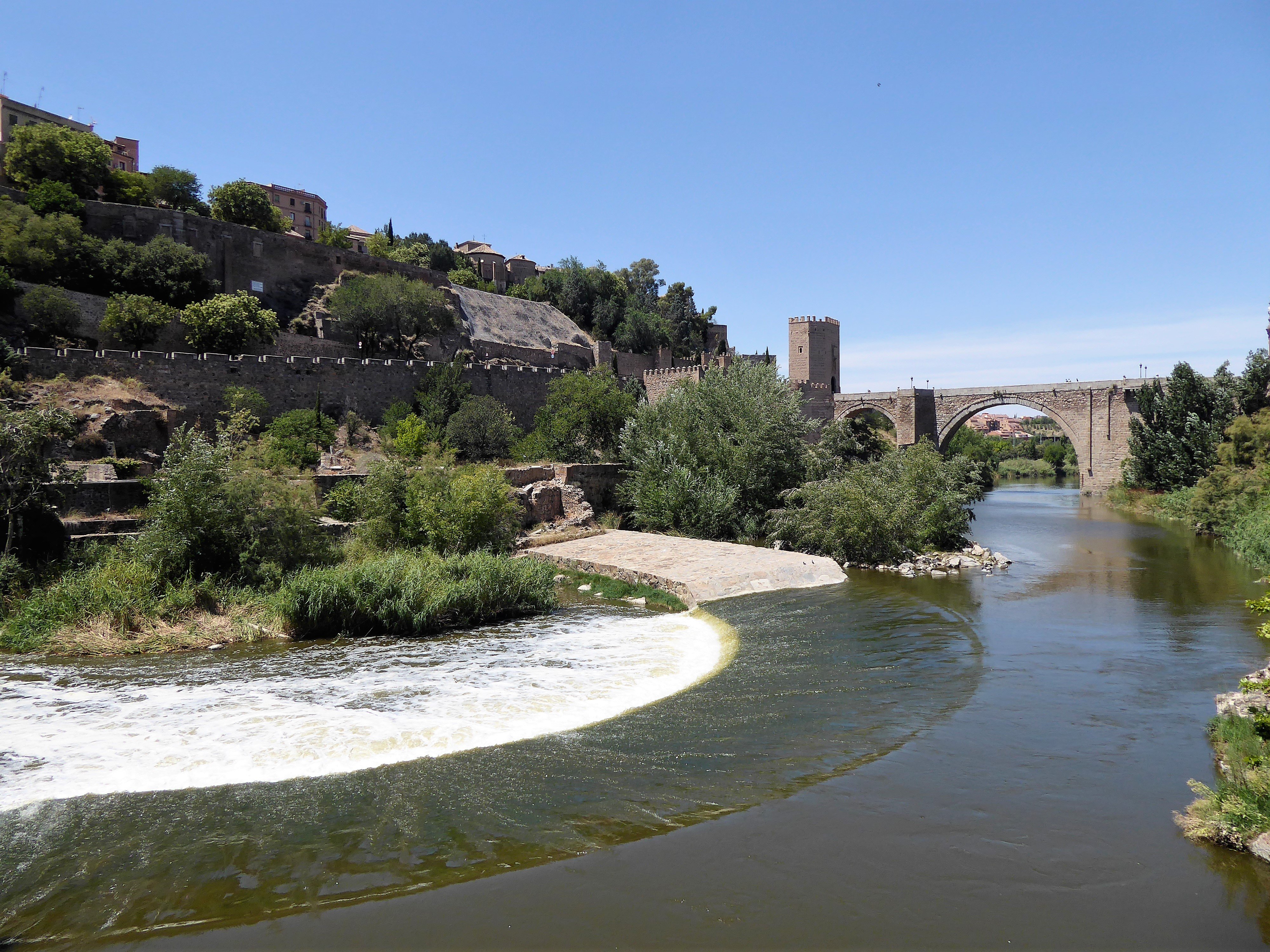
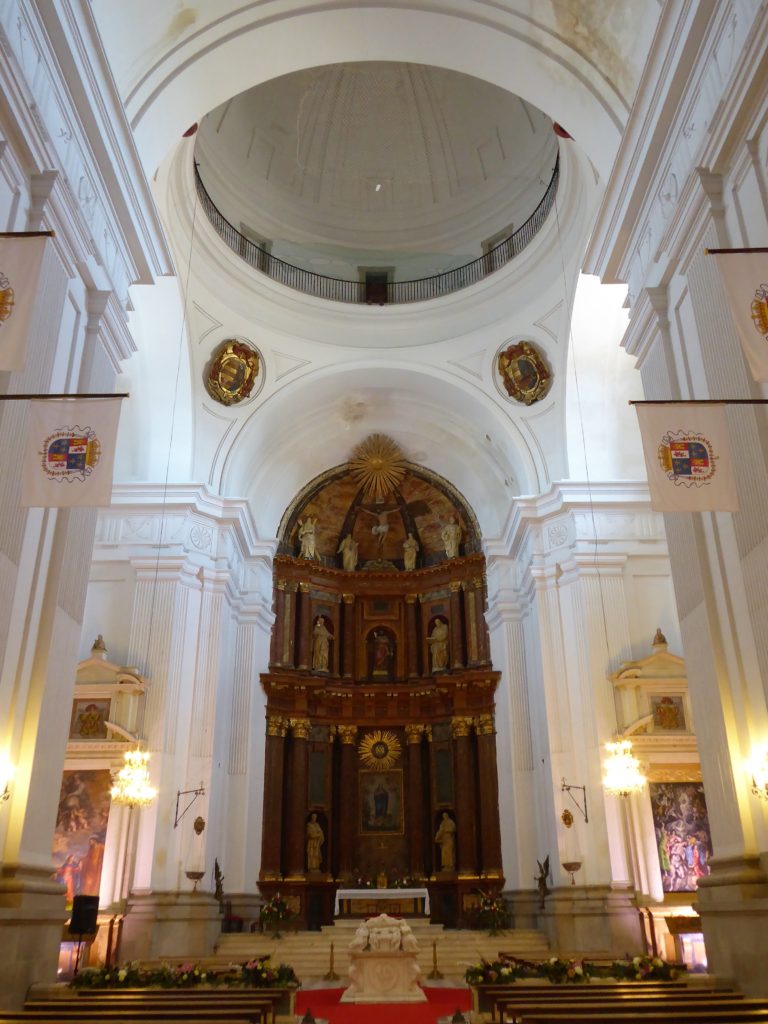
Hospital de Tavera / The Hospital de Tavera / Hospital de San Juan Bautista, Hospital de afuera, Hospital Tavera
Built outside the city walls it was completed in 1603 and currently owned by House of Medinaceli (also own La Casa de Pilatos/Pilates House/Casa Pilatos in Seville – I’ll put a link at the end of this post to my visit there). Someone had hired this as a wedding venue, how inconsiderate of them, so most of it was closed and the two lovely courtyards were bristling with people laying the tables and arranging flowers everywhere – disappointed I couldn’t see everywhere but the venue did look lovely and I hope the couple had a wonderful day.

As most of the hospital was closed I only had a small opportunity to see what was on offer, the church is great but nothing compared to what I had seen, right in front of the altar is the sarcophagus of Cardinal Tavera who instructed the hospitals construction. The church also has a few El Greco’s inside and in the little museum/gallery. I won’t say much about El Greco for now I’ll leave that till later in the blog.
Puerta de Bisagra Nueva / The New Bisagra Gate
This is most grandiose city gate of Toledo. Part of it is Moorish but the majority was built in the mid-16th century with the coat of arms of emperor Charles V emblazoned above the gate. This gate shouldn’t be mistake for Puerta de Bisagra / Puerta de Alfonso VI / Bab al-Saqra which is over a 1000 years old having been constructed in the 10th century.
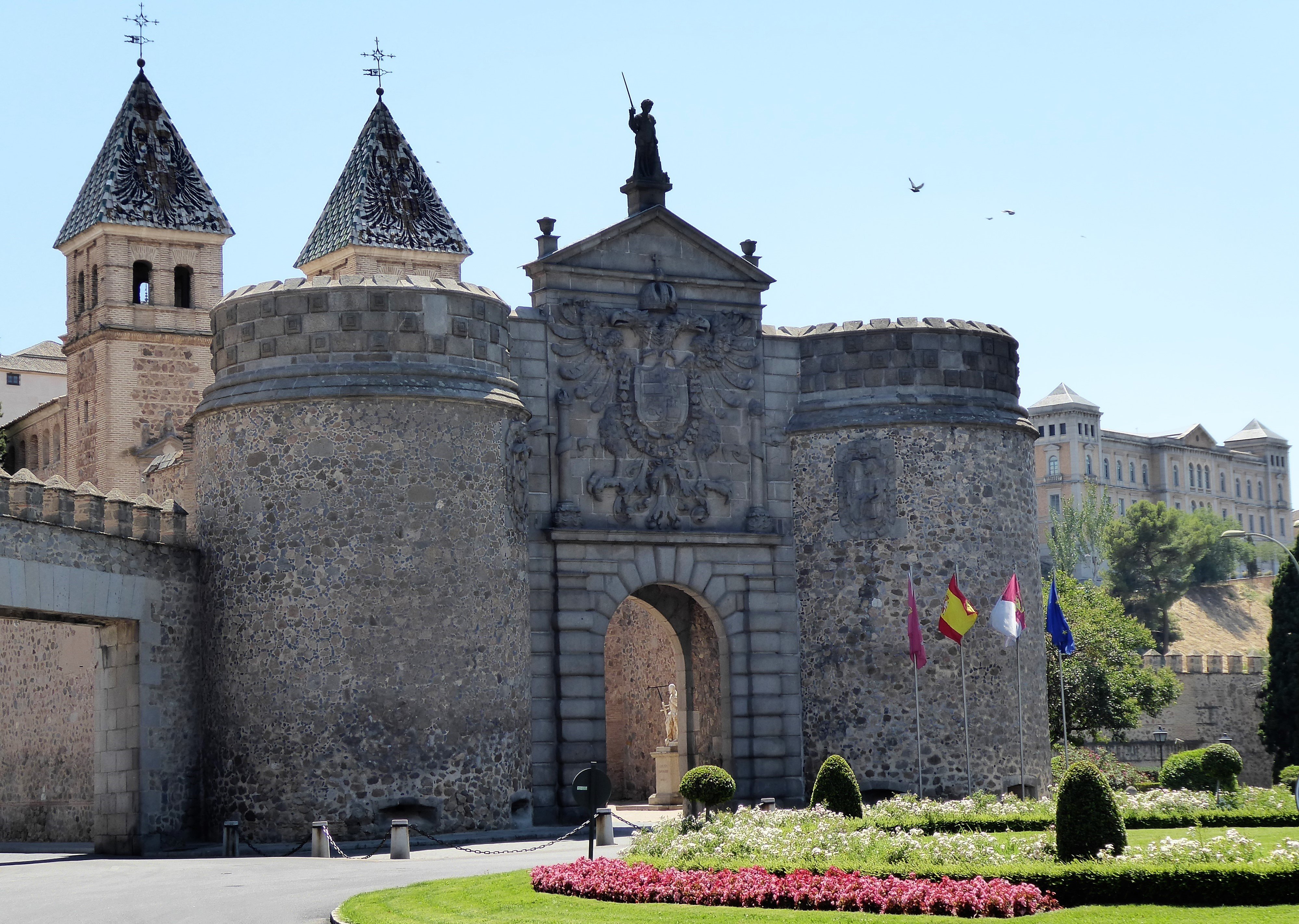
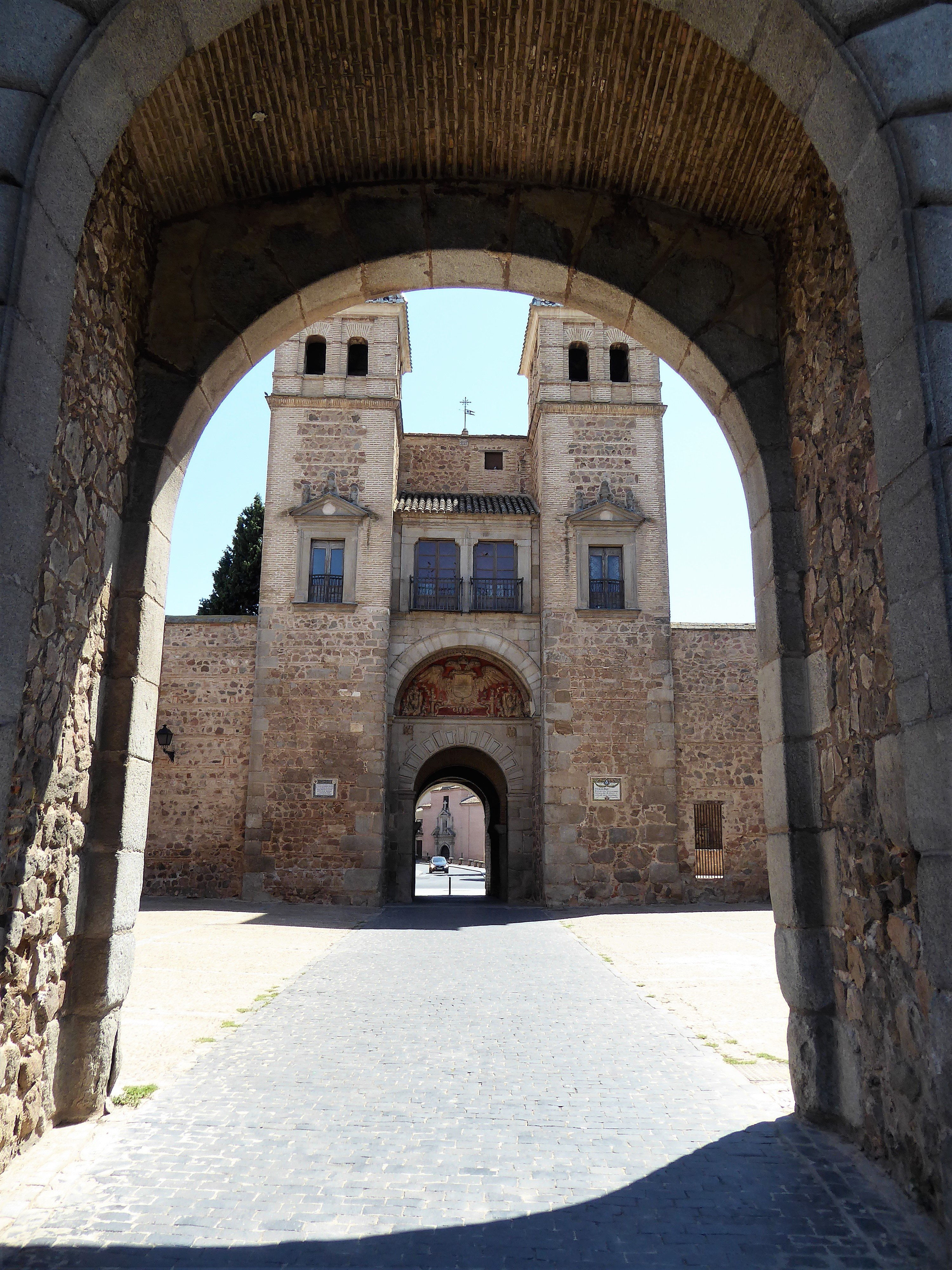


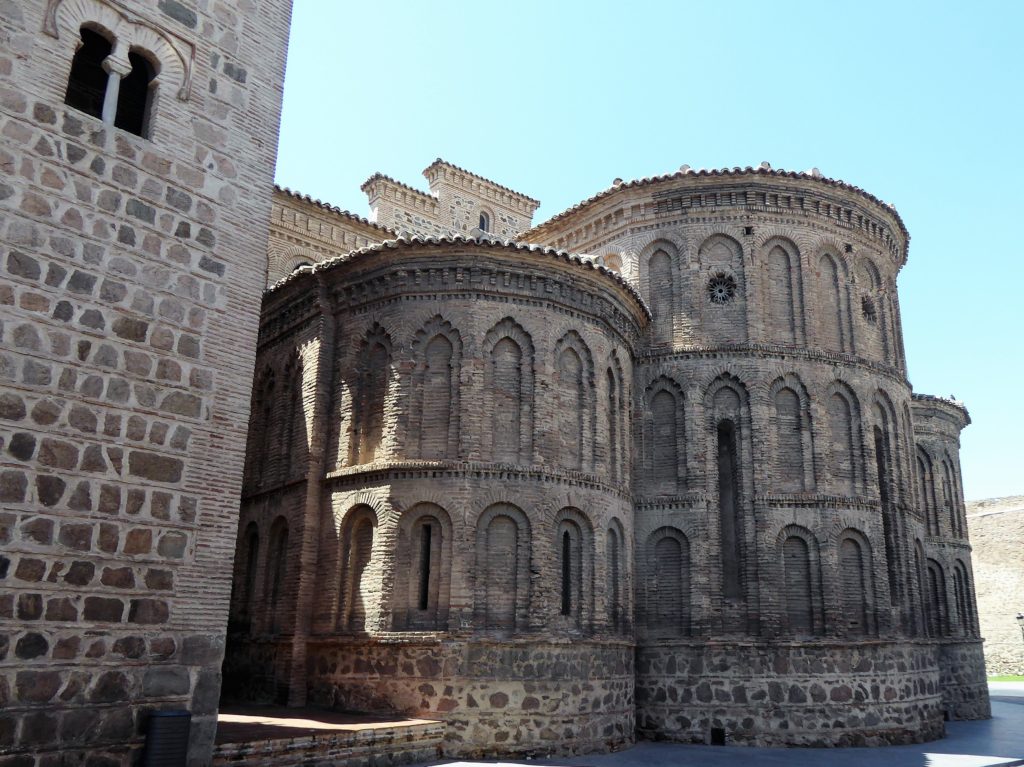
Santiago del Arrabal / Inglesia Santago del Arrabal / Church of Santiago of Arrabal
Not open to the public and as you walk through the New Bisagra Gate it is right in front of you. A peculiar looking building, almost vault like and from a distance it looks like it has no windows or where there should be they’ve been bricked up; even up close there are almost not windows with only a few slits in some of the window like frames. Built in the mid-13th century on the site of an older church and mosque that has been in use since at least 1125. Pity you can’t go inside.
Mezquita del Cristo de la Luz / Mosque of Cristo de la Luz
I was going to call it a day so took a detour scenic walk back to my hotel and passed Puerta del Sol a city gate dating back to the 14th century. Going around the gate up a few stairs you find the Mosque of Cristo de la Luz; the only mosque remaining of the ten that used to be in Toledo. It’s old, built in 999, and with only a few “Christian” changes mostly inside, it is very much unchanged from what it looked like over a 1000 years ago making it a precious historical gem. It gives you the opportunity to look back through the window of time and literally walk through history as it would have been like in a time so very different from now.

It’s very small, hmmm compact and from the exterior is looks very staunch and sturdy with almost no windows too. You would think the lack of windows would mean the inside is dark but on the contrary, inside it is light and airy aided by the slatted doors which cast lots of thin rays of light that reflect off the white arches and up into the square spires. The floor of the entrance is divided by four pillars that hold white horseshoe arches in all directions which divide the area into nine equal square parts. The spires extent into the roof helping to create a feeling of space, the middle spire the highest which can be seen from the outside. An understated building throughout however it is an extremely well designed building as gives the feeling of lots of space when there isn’t, produces light when there is none and creates an ambience with colour, texture and temperature – impressive.




The story of how the mosque became a church is an interesting story too, one of mystique, religious superstition, a king and deception……I’ll leave you to find out for yourself.
My day had come to an end, only one more day in Toledo! Eish! So much more to see and do!!!! Plan was to take a bit of a stroll around the town and by the river, I’ll leave that for my next instalment on Toledo.
Here’s the link to my visit to La Casa de Pilatos/Pilates House in Seville, also owned by the House of Medinaceli:
Seville, great place but time to leave, muchas gracias! – Part 3

This was so lovely to read. Never knew it was a childhood dream.